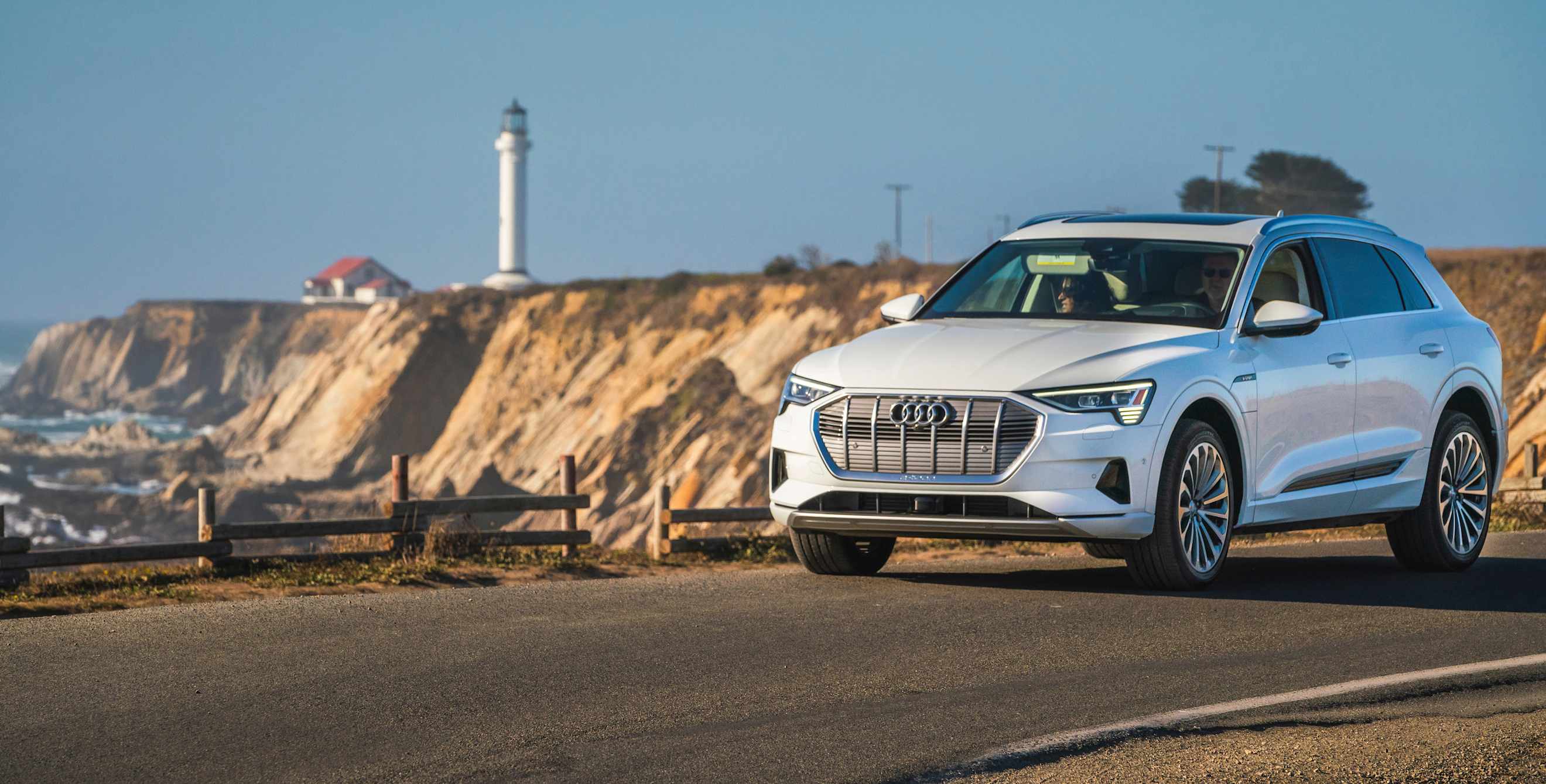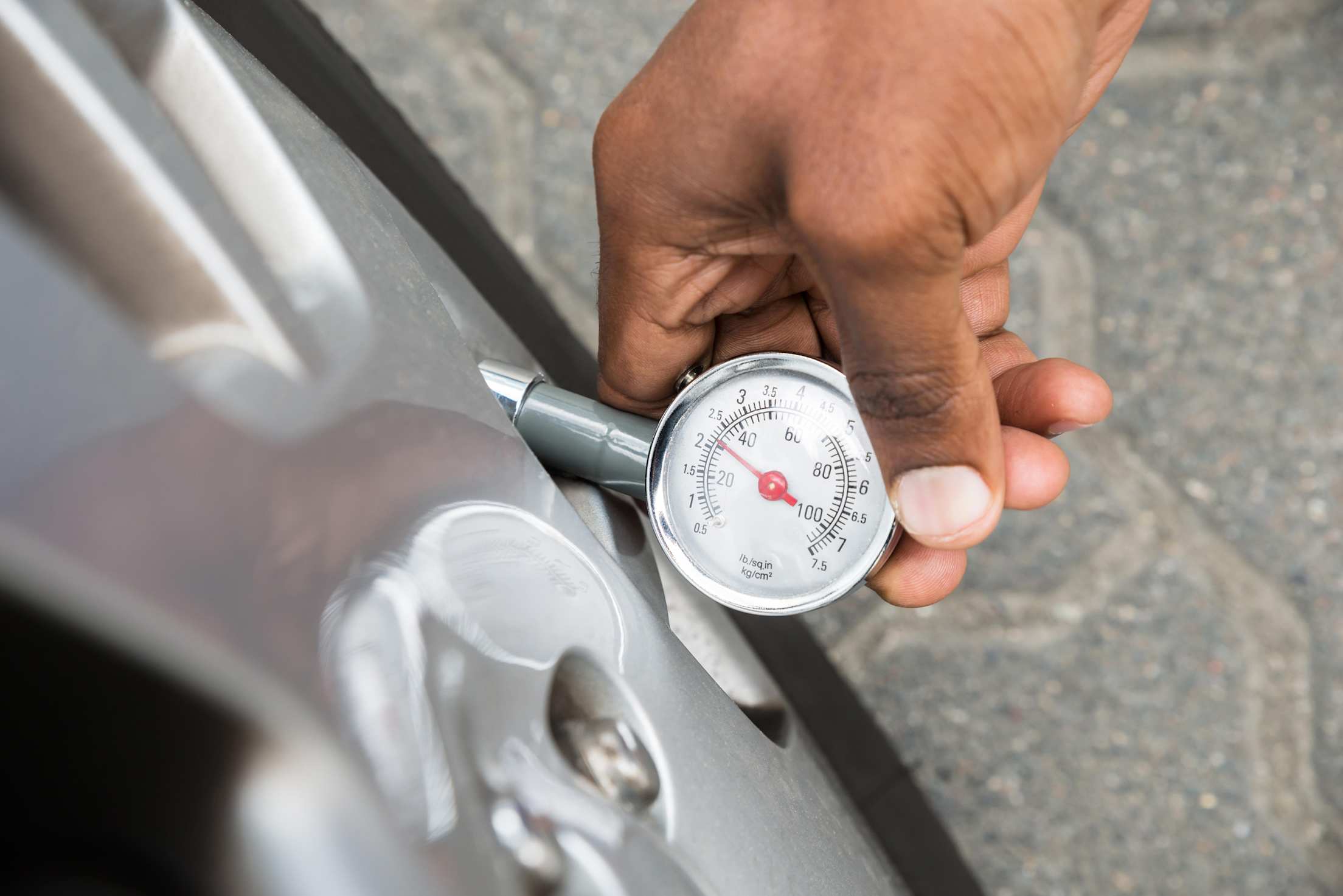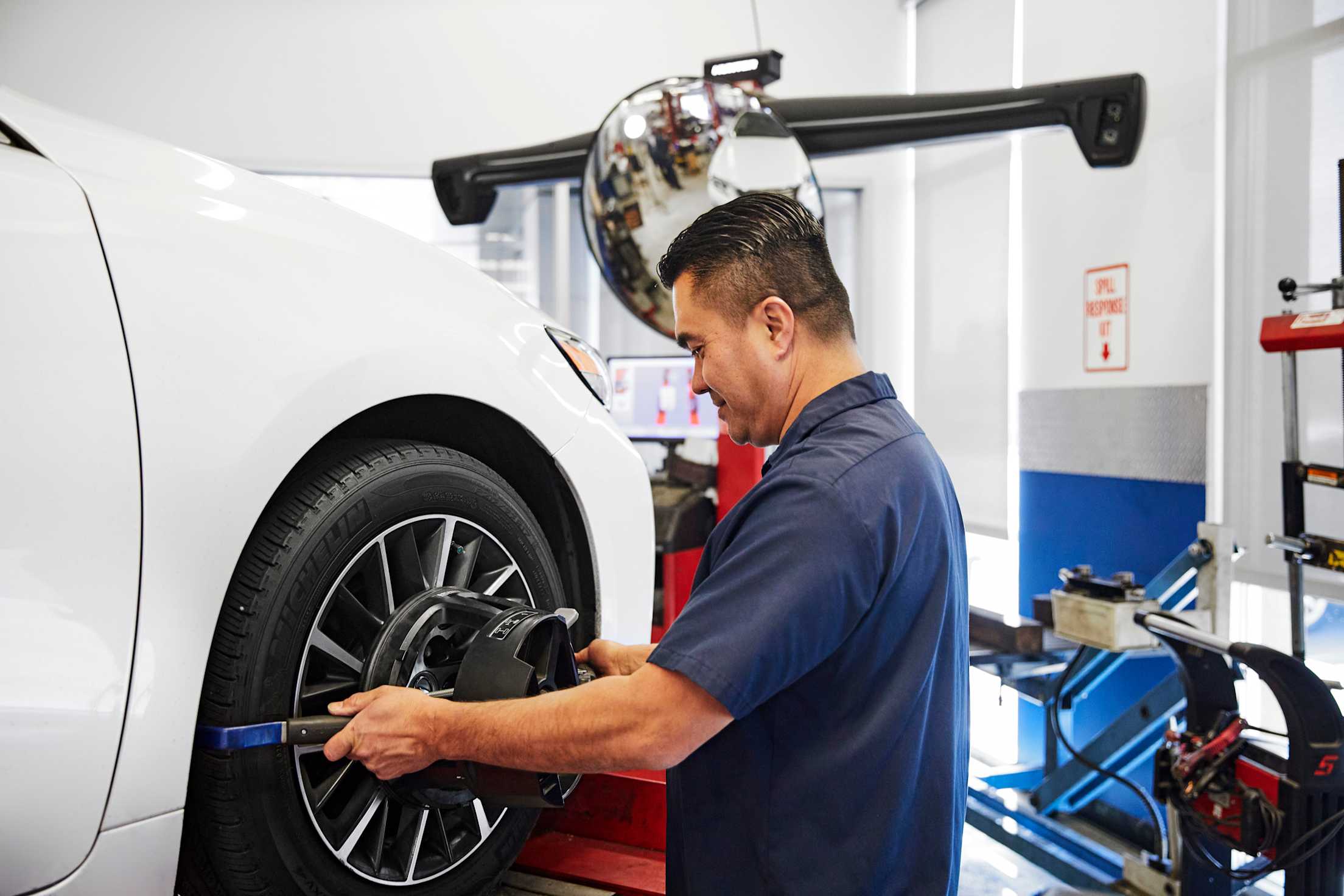
How to Maintain an Electric Vehicle
Extend your EV’s range, prevent future problems, and stay safe on the road with these required services.

Electric vehicles require less maintenance than gas-powered cars, but that doesn’t mean you can ignore them altogether. Routine maintenance will prevent unnecessary wear and tear, improve your car's efficiency, and help keep you safe and comfortable on the road. Even better, EVs cost $330 less to maintain each year than gas-powered cars when following the automakers’ recommendations.
Whether you are a current electric vehicle owner or you are considering purchasing one, understanding the routine maintenance that EVs require is critical to smart vehicle ownership. Learn the basics—broken down by which maintenance tasks you can do yourself and those that are best left to the professionals—to improve safety and extend the life of your EV.

Keep a tire gauge in the glove compartment to make tire checkups even easier.
EV Maintenance You Can Tackle at Home
“Electric vehicle owners can easily perform routine maintenance such as checking tire pressure and tread, refilling windshield washer fluid, replacing windshield wiper blades, and changing out cabin air filters,” says Matthew Lum, an automotive technical engineer at AAA. You don’t need many tools or in-depth knowledge of vehicle repairs to handle these tasks.
Check tire pressure and tread.
More than 700 people died in collisions attributed to tire failure in 2017, yet only 19 percent of drivers properly inflate their tires according to the National Highway Transportation Safety Association. Drivers should check tire pressure and inspect the tread at least once a month.
“When it comes to electric vehicles, improper tire pressure can contribute to increased tire wear and a decrease in range,” Lum says. Check your tire pressure when the tires are cold, which means the car hasn’t been driven in three or more hours. Your owner’s manual or the tire information sticker located where the driver’s side door and frame meet will tell you the proper PSI for the front and rear tires. If the pressure is low, inflate and recheck to avoid over- or under-filling.
When inspecting tires, look for bulges, uneven wear, and cracking (also known as dry rot). If you find any of these conditions, it may be time to replace your tires or have them looked over by a qualified mechanic to ensure there isn’t an underlying suspension or alignment problem. Your tires should have more than 1/16 of an inch of tread to ensure they can safely grip the road. A tire tread gauge or a penny can help you measure. Place the penny upside down into the tread groove. If you can see all of Lincoln's head, it’s time for new tires.

Top off windshield wiper fluid regularly to avoid running out when you need it most.
Refill windshield washer fluid and replace wiper blades.
Visibility is critical to driving safely. Washer fluid should be topped off monthly to ensure you don’t run out on the road. Wiper blades should be replaced every six to 12 months, or sooner if they leave streaks, are torn, or have a jagged edge. Follow the directions on the back of the new wiper blade package to install them.
Smart Tip: Before you begin removing the old blades, raise the wiper arms and lay a towel or a blanket on your windshield to prevent cracking it if you accidentally drop the arm.
Install a new cabin air filter.
This inexpensive filter prevents pollen, dirt, and other debris from entering the cabin of your vehicle when you turn on the climate control. Manufacturers usually recommend replacing the filter every 30,000 miles, but, depending on its condition and where you typically drive, you may choose to replace it sooner. In most vehicles, cabin filters are located behind the glove box. A vehicle-specific YouTube tutorial can show you how to remove and then reinstall the glove box in order to replace the filter.

Some maintenance tasks, such as a wheel alignment, should be done by a professional.
Important EV Maintenance Best Left to a Mechanic
While electric vehicles require fewer system maintenance services than internal combustion engine vehicles (ICE), they do still need periodic service, including regular inspection of steering, suspension, and drivetrain components. “Most EVs have a similar maintenance schedule to other cars, but there is actually a lot less work to be done on them during those services,” says Jess Shanahan, automotive journalist and an expert on the future of mobility.
Refer to your owner’s manual for the recommended intervals for inspections and services. “There are sometimes two or more maintenance schedules prescribed by the manufacturer that are specific to individual driving habits,” says Lum. “Owners should ensure they are following the maintenance schedule that is most relevant to their daily habits.”
Tire Rotation
To prevent uneven wear, your mechanic will remove the tires from the vehicle and reinstall them in a different spot. Your manual will list the recommended interval for tire rotation, but you can expect it to be somewhere between every 5,000 to 12,000 miles.
Wheel Alignment
As you drive, potholes, curbs, and other obstacles may cause your car’s wheels to shift slightly. To avoid uneven tire wear, a wheel alignment should be done for preventative maintenance once a year, but you should bring it in sooner for an inspection if your vehicle is pulling or the steering wheel is crooked while you drive.
Brake Services
Just like on an ICE, brakes need to be replaced when they are worn. However, brakes on an electric vehicle will likely require less maintenance because regenerative braking reduces the wear on brake components, notes Lum. In addition, brake fluid will need to be replaced roughly every five years, but you should check your owner’s manual for specific directions.
Other Maintenance
Some EVs require the air conditioning desiccant—a substance that removes moisture from the air—to be replaced. Coolant also needs to be changed on EVs, but usually only twice over the life of the car. Check your owner’s manual for exact intervals and other services your car may require.
How to Find a Mechanic for Your EV
Not all mechanic shops are qualified to work on electric vehicles. “AAA recommends researching repair facilities to determine which ones specialize in the repair and maintenance of electric vehicles,” says Lum. You can ask the repair shop if they are certified by the National Institute for Automotive Service Excellence (ASE) in electric vehicle repairs, which is the aftermarket standard for competency certifications. Use the AAA Approved Auto Repair Facility locator to find a trusted facility in your area. If your vehicle is still under the manufacturer’s warranty, you may also be able to bring it back to the dealership for service.
Make smart choices, whether you're buying, selling, insuring, maintaining, or repairing a vehicle.